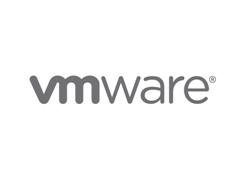Cloudify and VMware, Inc. announced the companies are helping Partner Communications implement a novel approach to network functions virtualisation (NFV) that has resulted in a rapid conversion to NFV and a reduction in cost-per-customer to deliver network services.
Partner Communications, an Israeli telecoms group, selected Cloudify and VMware to launch its new vCPE and SD-WAN solution called V-NET. Based on the open-source TOSCA standard, V-NET was delivered through a unique, cloud-native approach to network service orchestration using an agile/incremental approach referred to as “orchestration first.”
The approach focuses on designing and deploying the NFV orchestration and automation capabilities first atop the company’s existing network infrastructure (physical or virtual). New virtualised network services can then be deployed in days or weeks rather than months.
Novel orchestration first approach reduces barrier for NFV adoption
To date, most approaches to NFV adoption follow a process in which a new, virtual infrastructure is built from the ground up to replace the existing physical network functions. Then, virtualised network functions are deployed atop the new infrastructure. Finally, the critical components of orchestration and automation are added prior to launching the new NFV services. This process typically takes 12-18 months and involves multiple cycles of vendor selection, internal training and POCs.
Cloudify and VMware delivered to Partner Communications the solution very quickly. The team first deployed automation for the manual steps of setting up and configuring physical network functions and firewall services on Partner Communications’ existing VMware platform.
This new “orchestration first” approach takes advantage of a collaboration between Cloudify and VMware that accelerates NFV adoption. Users of Cloudify with VMware vCloud NFV™ can deploy new VNFs over their hybrid cloud deployments, automating lifecycle management. They also can correlate information gathered from both software platforms to deliver improved performance and utilisation of the underlying hardware.
The approach enabled Partner Communications’ operational team to employ pluggable open VNFs. These were easily integrated with existing billing and activation services. As a result, Partner was able to move V-NET to production in less than six months. V-NET provides a complete self-service experience for managing its network services.

Cloudify and VMware collaborated on this “open vCPE” solution enabling Partner Communications to deliver a new, virtual, managed service offering. The Open vCPE (virtual customer premises equipment) solution includes the VMware NFV Infrastructure platform, the Cloudify Orchestrator, virtual firewall and router functions and both CPE and vCPE customer premise options.
Open vCPE delivers all of the core benefits of a vCPE services model, with the added value of being open, by using any CPE or vCPE and any VNF to build an end-to-end virtual managed service.
Capabilities and benefits of Partner’s V-NET system:
- Network traffic management for central IT and branches via a single interface
- Backups of up all communications, services and information security systems, including cellular, wired and fiber optic, operating in parallel and providing continuity of service
- Rapid setup of new branches and connections to the network
- Automated, real-time alerts covering problems at branches locations
- Simplified network policy management for the organisation and branches
According to Raz Bartov, VP Technologies and IT, Partner Communications, “NFV is fundamentally changing the way communications services are provided, and Partner is pleased to be leading the way in our market. The Partner V-NET platform creates intelligent management of communications networks, services and cloud access, enabling IT managers to have direct access to any point or branch of the management interface, while saving significant manpower, time, hardware and money.
Our decision to use Cloudify with VMware vCloud NFV to drive our NFV adoption process dramatically shortened our time to market with the V-NET platform.”

“Lowering the barriers to entry for NFV adoption is our first priority,” says Nati Shalom, chief technology officer, Cloudify. It’s one of the reasons we’re a founding Platinum member of the ONAP community, where Cloudify is aligned with the future direction of NFV adoption. Our orchestration-first, open source, cloud-native approach to NFV adoption reduces the learning curve and accelerates VNF on-boarding.
Working with Partner, we’ve achieved another milestone, lowering cost and complexity barriers so that Tier-2 carriers can adopt NFV. This approach to NFV adoption will shape how NFV projects look going forward.”
Honoré LaBourdette, VP of Market Development, Telco Group, VMware added, “Communications service providers such as Partner can benefit significantly from network functions virtualisation based on open architectures and proven underlying infrastructure such as VMware vCloud NFV.
By joining together with Cloudify and Partner, we are demonstrating a model for network evolution that can improve service agility and velocity to drive revenues, while simultaneously reducing overall costs for greater profitability.”
Comment on this article below or via Twitter: @ VanillaPlus OR @jcvplus






